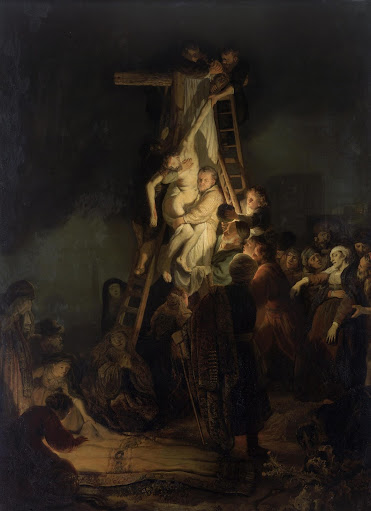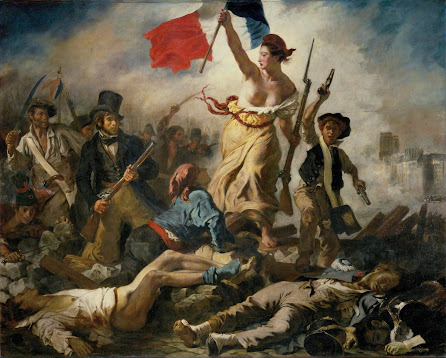Romanticism
The Romantic Era is my favorite segment of Art History. It's my personal philosophy that all great art elicits some sort of emotion out of the viewer or can communicate the emotion to the viewer and a lot of romantic artists seem to agree. One of the biggest hallmarks of the Romantic Era was the heavy use of emotions and emotional subjects as a reaction to the Neoclassicism style that came before it.
 |
| Caspar David Friedrich, Wanderer above the Sea of Fog, 1818 |
 |
| Alexandre Cabanel, Fallen Angel, 1847 |
Two great examples of the Romantic style are Caspar Friedrich's Wanderer Above the Sea of Fog from Germany, and Alexandre Cabanel's Fallen Angel from France. I chose these pieces to illustrate the emotional aspects of the Romantic style because they both portray emotions in a beautiful way, but as nearly polar opposites of each other. Friedrich's work is deeply foreboding, the dense fog underneath the wanderer gives the rocky landscape an unearthly feeling, a literal "uncanny valley" below the titular character. Speaking of him, even though he's clearly standing on very rough terrain nowhere near civilization, he is dressed finely in a fancy coat and has a cane under his right hand. At first glance, the work appears very serene but on further examination, its massive sense of scale starts to form a pit in the viewer's stomach, its blue and black color palette creating a very somber piece.
On the flip side of that is Cabanel's Fallen Angel. Alexandre Cabanel was admittedly more widely known as an Academic artist rather than a Romantic, known for pieces like his portrait of Napoleon III from 1865, or The Birth of Venus from 1863. However, Fallen Angel stands out in his collection for portraying the iconic emotional imagery the movement was known for, at one point his academic peers criticizing the painting for being "too romantic". The piece depicts the fallen angel Lucifer, reclining against a rock with other angels in the sky above him. The depiction of the angel in this piece is a master-class example of body language and nonverbal emotion. Half of the figure's face is covered behind his arm, but you can still tell exactly what he is feeling. His arms and legs are raised in a defensive position and nearly every muscle on his body is tensed, especially visible in his hands and thighs. There is an incredible amount of emotion in his eyes, an obvious fury rests in them as he looks forwards in a mad, Kubrickian stare. Perhaps the most interesting detail of the entire piece is the tear falling from Lucifer's eye. Normally, his body language and expression would simply suggest anger, but the addition of the tear suggests he is feeling so much more. Rage, but also pain, deep pain that is visually on the edge of overwhelming him.
 |
| Alphonse Mucha, Zodiac, 1896 |
 |
| Alphonse Mucha, The Seasons - Summer, 1896 |
Contrast the high emotional energy of the Romantic works against these Art Noveau pieces, Zodiac and The Seasons - Summer, both done by one of the pioneers of the style and made in Paris, Alphonse Mucha. Mucha is most well knows for his fantastic graphic design from the era, his use of thick outlines on the subject as well as the use of Noveau's iconic "whiplash curves" creates bold, organic shapes that catch the viewer's eye. A majority of his works, while not as emotionally intense as some romantic works, use smooth curves and muted colors to draw out a sense of awe from the audience.
Sources:



Comments
Post a Comment